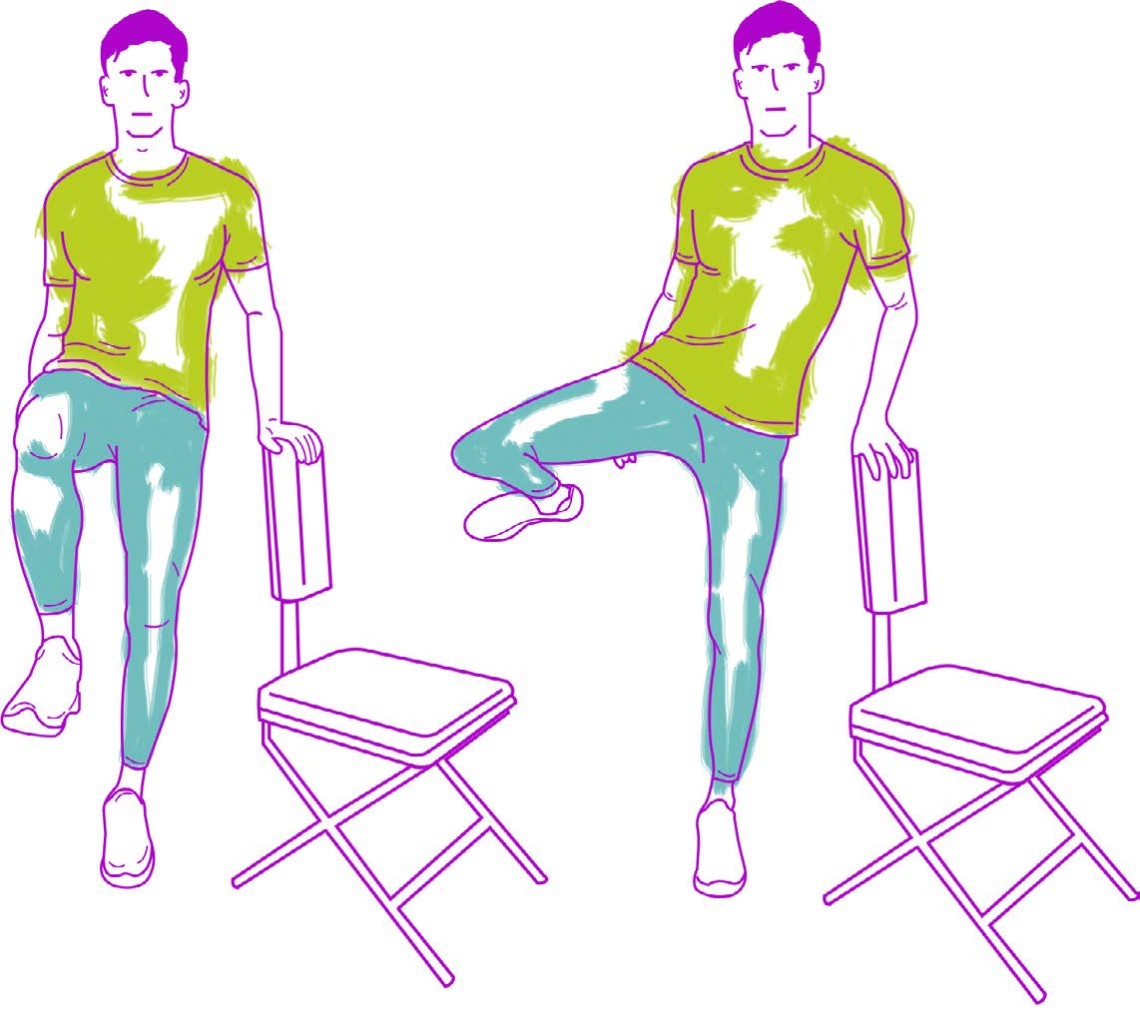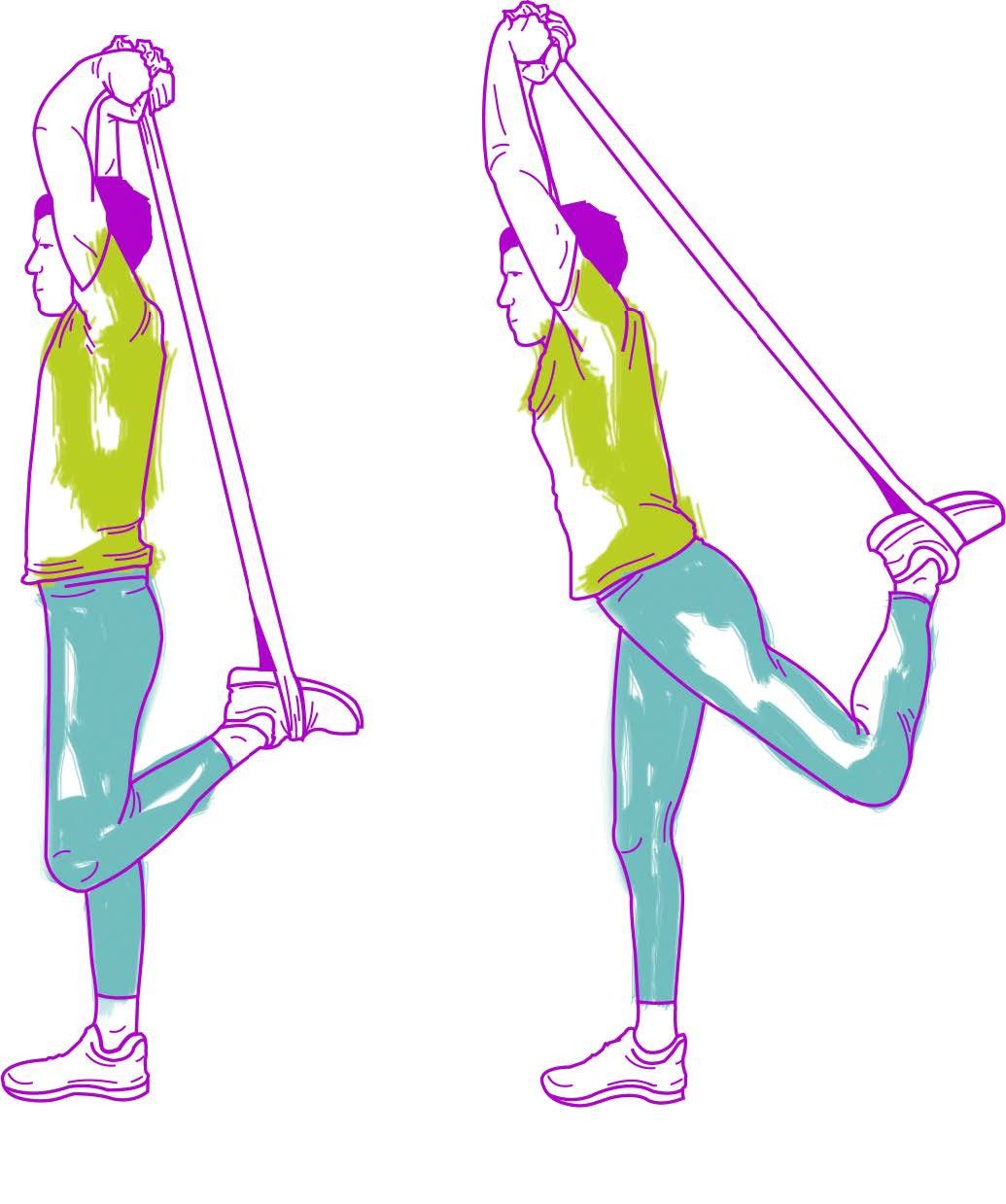How you look and feel begins with posture. Time to pay more attention to yours.


How you look and feel begins with posture. Time to pay more attention to yours.
You can blame the pandemic for a lot of things, but bad posture has been plaguing many long before the coronavirus drove us to stay in. It’s not even just the way we sit at our desks that is problematic, but the way we do pretty much anything, from walking to standing and, over the last couple of decades, texting. Yes, “text neck” is officially a thing.
Stiff necks, sore backs, headaches, rounded shoulders and general aches and pains are all symptoms of poor posture. But fixing it isn’t as simple as sitting or standing a little straighter. “Many sources use words like ‘neutral’, ‘upright’ and ‘straight’ in describing what a static good posture looks like, but in real life, we are constantly moving while engaged in any activity,” explains Dr Kenny Wong, chief therapist at The Stretch Clinic Singapore. “Good posture refers to how well a person can move through a range of motions without restrictions or tightness.”
Of course, what it means to have good posture can vary between individuals. A rock climber, for example, is normally a little hunched over at any time but that isn’t an indication of poor posture or a weak back. Conversely, they would have quite a strong one to support all that climbing.
“Any position, good or bad, when held for too long, affects our posture and will possibly become a bad habit,” continues Dr Wong. Such habits as slouching and looking downwards at devices can cause a strain that is felt in the neck, back, elbows and even wrists. They can even affect sleep. “The habits formed during waking moments are replicated in sleep, like how someone who hunches a lot during the day would prefer to sleep in a foetal position at night. We have become creatures of flexion. Hence, we need to work on extension.”
Habits formed during waking moments are replicated in sleep... we have become creatures of flexion.
A $2,000 Herman Miller isn’t necessarily the way to do that. While we should invest in a good chair, given how many hours we spend in them, price tags aren’t indicative of how well the chair will meet your needs. “Consider the following factors. Is it comfortable? Are you in good form? Can you adjust the height and recline? Does it allow you to get on and off without pain? Give it a 30-minute trial,” Dr Wong advises.
While the immediate benefit of good posture is freedom from pain, there are a host of other perks, including an improved digestive system, a more regulated hormonal balance, better quality of sleep, higher energy levels, better breathing, greater cognitive function, a taller appearance and increased self-confidence. “We are often too distracted by things around us to notice the messages our bodies are sending us,” he says. “But we need to listen to our bodies more so we can correct our postures even before we feel the pain.”
DOCTOR WHO?
If you think you require professional help for back pain and related issues, and are wondering about the differences between osteopathy and chiropractic treatment, here’s a quick rundown.
01 OSTEOPATHS
They adopt a holistic approach by treating a person as a whole rather than targeting specific symptoms, thus improving the patient’s overall health and fitness level. Their principles are grounded in ensuring the skeleton, muscles, ligaments and connective tissues all work together smoothly and involves the rhythmic mobilising of the joints to restore the optimal range of movement. By observing the type of movements that cause you pain, an osteopath will be able to devise a treatment plan – which usually includes physical manipulation, stretching and massage – to restore normal, pain-free movement.
02 CHIROPRACTORS
They believe that there is a relationship between the spine and nervous system since the nerves that branch out from your spinal cord reach into every part of your body. If your spinal vertebrae move out of alignment, the adjacent nerve roots can become pinched or trapped, leading to impaired movement or pain. While chiropractors are similar to osteopaths in that they believe neck and back issues are symptoms of musculoskeletal problems, the former focus on correcting misalignments of the vertebrae, typically by applying a controlled, sudden force to a joint.

HABITS THAT HURT
A lot of the discomfort we feel from bad posture is caused by static positions we don’t realise we’re holding. Take note of these common bad habits and learn to be aware of them before the pain starts.
AVOID STANDING:
• With more weight on one leg than the other
• With shoulders hunched
• With the belly or bottom sticking out
• With feet in a wide “V” stance
AVOID WALKING:
• With a dragging gait
• With the back arched
• With steps that are too short or too long
• With heels striking the ground too hard
AVOID SITTING:
• With knees or arms crossed
• With a craned head or neck
• With feet dangling or not properly supported
• Slumped to one side

DESKBOUND EXERCISES
Take a break from your Excel sheets and get the blood flowing.
HIP ROTATION
Stand with your hands on the hips or a chair for support. Lift one knee to waist level and move it out to the side until your shin is parallel to the floor. Return to the starting position.

SHOULDER RETRACTION
Retract your shoulders back by squeezing the shoulder blades together. Hold for a few seconds and repeat. Don’t raise your shoulders.

SCAPULA ACTIVATION
Hold a pair of dumbbells and, seated or standing, raise the arms to shoulder level without bending the elbows. Slowly lower your arms and repeat.

NECK STRETCH
Slowly move your head from side to side and up and down, taking deep breaths with each movement.

HIP FLEXOR STRETCH
If you have a resistance band, place one foot in one end of the loop while holding on to the other end. Gently pull on the band until you feel a stretch in your quads. Hold for a few seconds and repeat.

EXTERNAL ROTATION OF SHOULDER BLADES
Keep the shoulders down and relaxed. Then rotate the forearms away from your body while drawing the shoulder blades together. Return to the starting position and repeat.
PRIME POSITIONS
Many don’t have the luxury of being constantly mobile, so if you’re going to stay static for a time, at least do it right.
STANDING
• Draw your chin back slightly and up, keeping it largely parallel to the ground.
• Keep the shoulders aligned with your hips.
• Don’t straighten the natural curves of your spine, but your hips should align with your ankles.
• Your weight should be distributed evenly in both feet, standing about hip-distance apart.
SITTING AT A DESK
• The top of your screen should be slightly below eye level. Adjust the distance so it’s about 45cm to 70cm away.
• Relax your shoulders.
• Your forearms should be parallel to the ground with a minimal bend at the wrists.
• Your chair should have a backrest and armrests.
• Keep your feet parallel to the floor and flat. Use a footrest if necessary.
• Adjust your chair so your hips are a few degrees higher than your knees.
DRIVING
• When both hands are on the wheel, keep your elbows relaxed and grip soft.
• Adjust the seat so your knees are level with or a few degrees below your hips. Knees should always be slightly bent, even when depressing the pedals.
• The back and shoulders should rest firmly on the seat. Use a pillow if the seat doesn’t provide lumbar support.
• Elongate your spine along the back of the seat. When elongated, your rib cage and pelvis should align.
• Slide your shoulder blades down. Having them supported allows your head to be aligned, minimising pressure on your neck and back.
• Draw your chin down and relax your jaw.
TEXTING
• Bring your device up to eye level to relieve the stress on the neck. Don’t bend it; only your eyes should be moving as you read.
• Avoid craning your neck forward. Instead, draw your chin in, lengthening through the top of your head.
• Alternate between using one or both hands to hold the device, and between using just your thumbs and other fingers while texting.
• Let your elbows rest on the sides of your torso.
• Keep your back in a straight or neutral posture.
Illustrations ASHRUDDIN SANI























